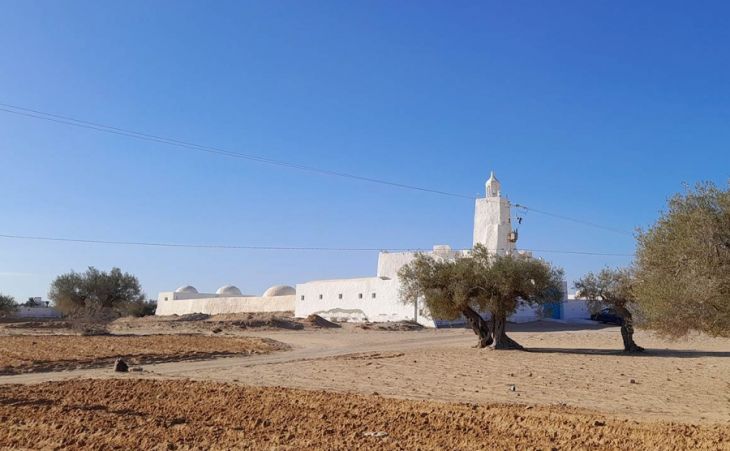
Djerba’s delightful white mosques, some over a thousand years old, tell the story of a unique history and culture. Take a walk through the island’s countryside to discover these mosques and their secrets, and gain a better understanding of this island, which was declared a UNESCO World Heritage Site in 2023.
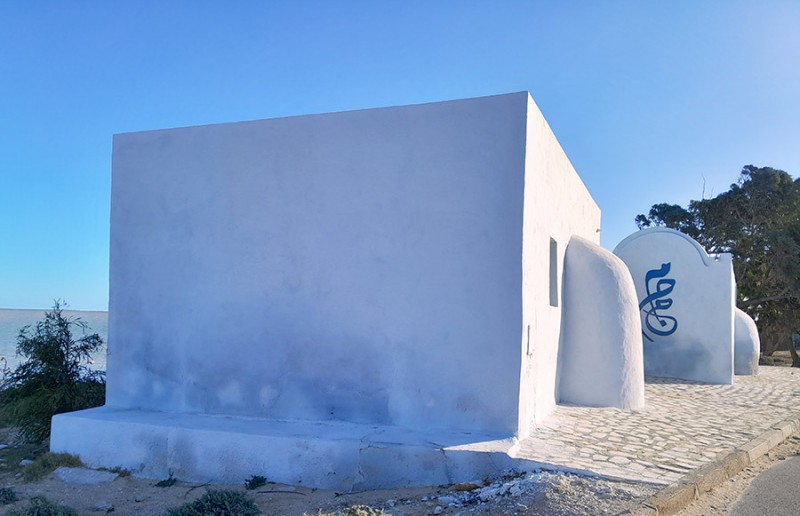
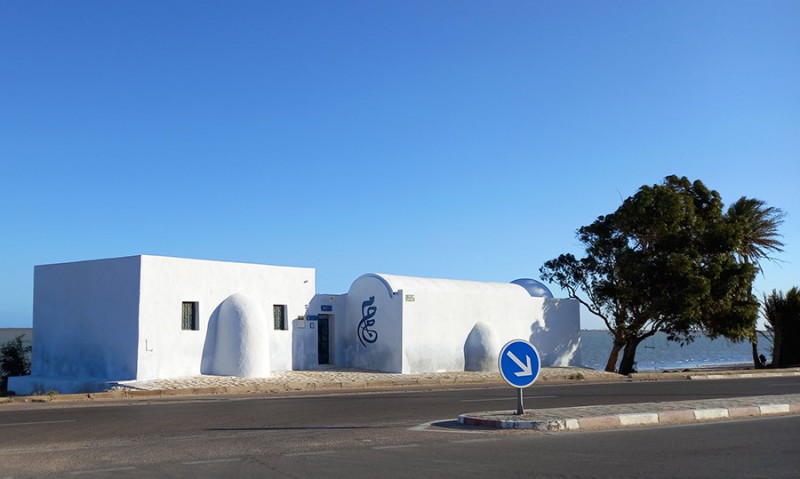
One of them, Sidi Ismaïl (deformed into Smaïn), has two mosques named after him facing each other. A second, larger mosque was subsequently built on the other side of the road. This is where the prayers are held today.
As for the historic mosque, it is a modest building without a minaret that stands on the edge of the waves.
On the wall are large Arabic letters in calligraphy: the logo of the Association of Architects of Djerba, which recently set up its headquarters here.
On either side of the entrance door, two protruding, rounded shapes: these are the faces visible from the outside of the two mihrab, or niches indicating the direction of prayer. One is inside the mosque, the other in an adjacent open gallery. Most of Djerba’s mosques, perfectly adapted to the climate, had an outdoor space for praying on summer evenings, when the temperature inside was unbearable.
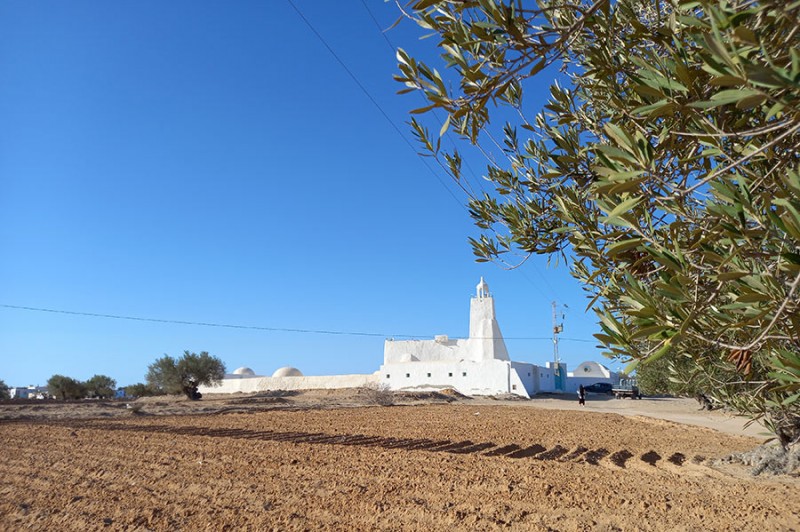
From the Sidi Smaïn mosque, tracks lead into the Djerbian countryside, between high slopes crowned with cactus.
A short half-hour walk, punctuated by bunches of palm trees and century-old olive trees, leads to the hamlet of Fatou.
Here you will find the Tajdit mosque, with its white minaret topped by a lantern and surrounded by solid buttresses, standing like a pyramid in front of the old olive trees.
It was founded in the 9th century.
Impressive for the purity of its forms, this mosque once had a distinctly warlike function. Its minaret was first and foremost a watchtower and a fire tower: from its summit, light signals were sent out to alert the surrounding area.
Clearly visible above the two doors of the prayer hall are balconies of sorts: in reality, machicolations. In the event of danger, the population would take shelter inside: invaders would be repelled with stones or boiling oil.
In addition to the machicolations, you can still see the old loopholes cut into the parapet of the roof terrace.
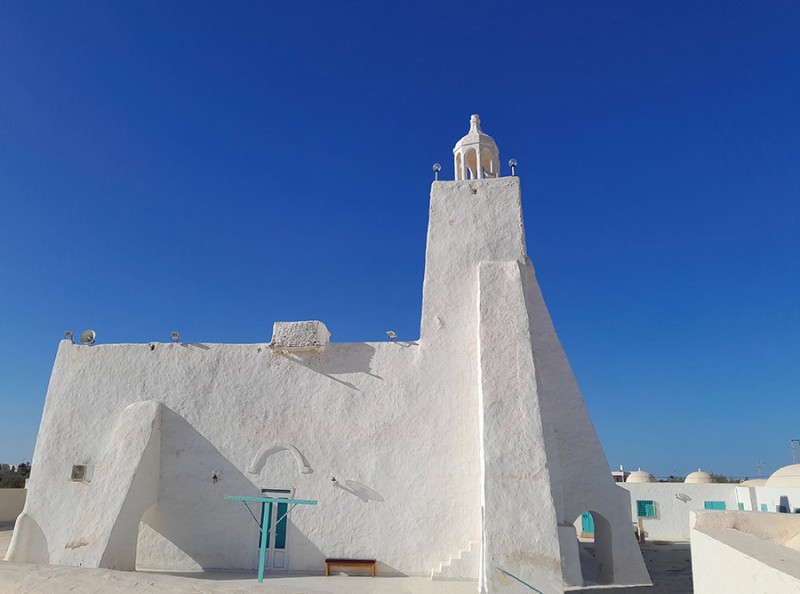
An unusual detail compared to traditional mosques: to the right of the entrance door are a few steps that lead to nothing. A construction error? Not at all. In the ancient Djerbian tradition, the muezzin did not climb to the top of a minaret to call for prayer, but climbed this small staircase.
This tradition is that of a religious movement that was very popular in the Berber world in the early days of Islam: Ibadism. Almost extinct today, it has survived in Djerba. Many mosques bear witness to this.
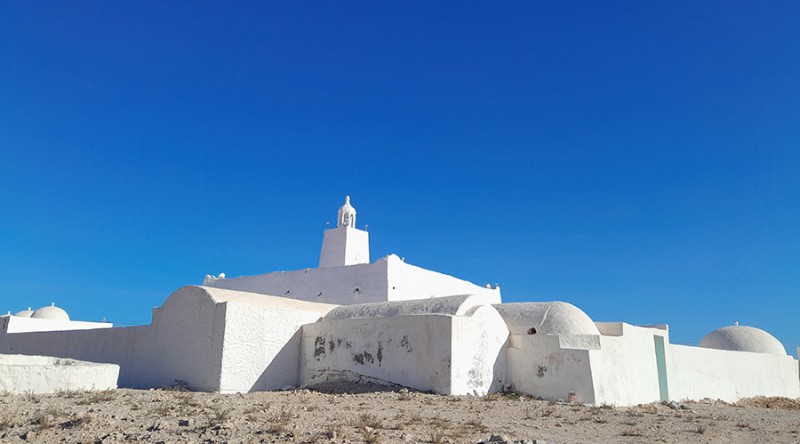
The Ibadites were very attached to the values of sobriety and equality. How can we fail to recognise these values in their architecture?
Surrounding the prayer hall, the multiple vaults and domes of the Koranic school and its outbuildings also express this ideal of harmony in simplicity.
The Tajdit mosque, along with other similar ‘fortress mosques’, formed Djerba’s second line of defence, parallel to that of the coast. One of the most important of these can be found in the hamlet of Ghizen, a few kilometres further east: the Tlakine mosque.
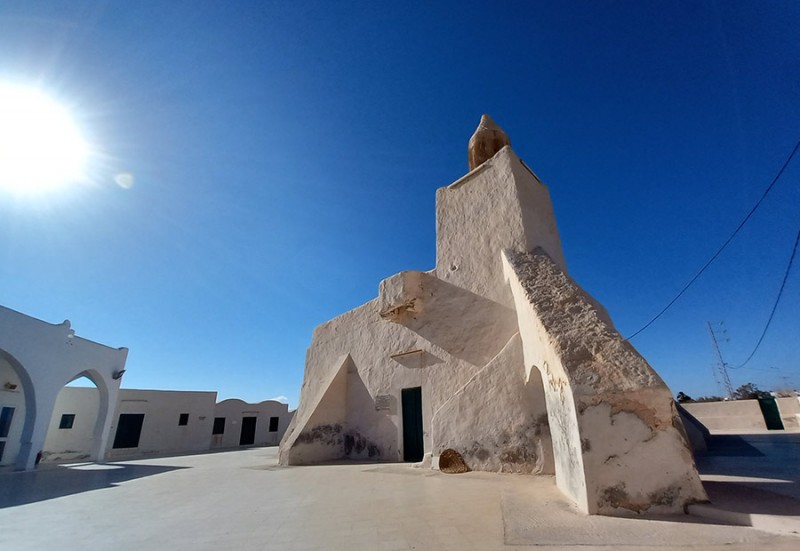
Same characteristic silhouette, same sturdy walls reinforced with buttresses. The same minaret topped with a lantern and the same machicolation above the entrance door.
The Tlakine mosque, built in 1205, occupied a key point in the system: it is located in the north-east of the island, the area most exposed to threats from the sea
Some, on the other hand, are large complexes with a wider influence.
From the Tajdit mosque, a half-hour walk south leads to one of these: Jemaâ El Bessi.
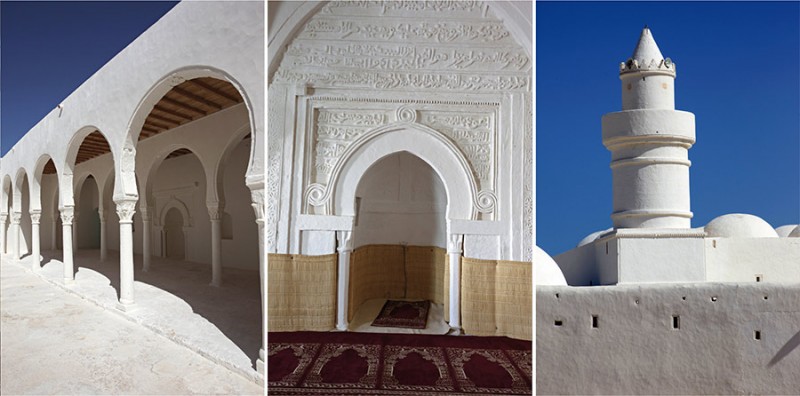
Isolated in the middle of the fields in the Oualegh district, at the end of a sandy track, the El Bessi mosque was a veritable centre of learning. It had an Ibadite school, which even attracted students from the continent.
Its architecture is characterised by a certain research. The minaret, crowned by a circular balcony and then a conical top, betrays an Ottoman influence: the Bessi brothers, its founders, were wealthy Djerbians established in Istanbul in the 18th century.
The outer gallery for summer prayer has two rows of arcades with capitals and horseshoe arches. The interior of the prayer hall is decorated with colonnettes, calligraphy and sculpted motifs.
Around it are the library, the Koranic school, the students’ rooms and various outbuildings.
A marble plaque, kept in the mosque, bears all the organisational rules instituted by the founders: from the use of the mosque’s income to the imam’s remuneration.
Sidi Smaïn, Tajdit, Tlakine and El Bessi: these four mosques are among the 24 monuments and 7 areas selected by UNESCO for Djerba’s inclusion on the World Heritage List. They are highly representative of the island’s unique history and the cultural and religious particularities that make up its unique identity.
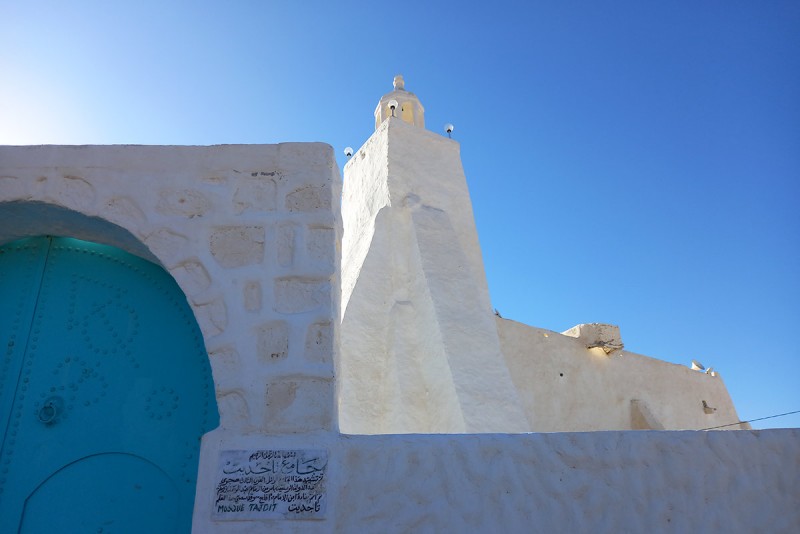
Djerba on the UNESCO World Heritage List
Hiking on the island of Djerba
Guesthouses and ecolodges in Djerba